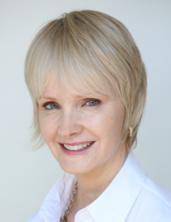 Most venture capitalists don’t curse like sailors. Most can’t boast a 90 percent internal rate of return over the course of their investing careers, either. Kathryn Gould — the inimitable founder of Foundation Capital, who today spends much of her time today on her vineyard in the foothills of California’s Sierra mountain range — is known for both.
Most venture capitalists don’t curse like sailors. Most can’t boast a 90 percent internal rate of return over the course of their investing careers, either. Kathryn Gould — the inimitable founder of Foundation Capital, who today spends much of her time today on her vineyard in the foothills of California’s Sierra mountain range — is known for both.
In select circles, Gould, who got her start in VC in the late ’80s at the now-defunct firm Merrill, Pickard, Anderson & Eyre, is also known for mentoring up-and-coming investors.
We talked recently about her views on the industry – and which VCs she’s betting on right now.
You used to make angel investments, including a $50,000 investment in Demandforce that returned $2 million when the company was acquired by Intuit in 2012. Why stop?
I made three angel investments, and I wouldn’t say I won’t do more, but I’m a perfectionist and for me, making angel investments [requires as much time and effort] as running a firm. My lifetime IRR is 90 percent and I’m not going to mess with my numbers just to screw around.
[Early-stage investor] Mike Maples and I put our personal money into Demandforce before we started Floodgate, but chance favors a prepared mind, and while I could still [make angel bets], I don’t want to.
When you say that “we” started Floodgate, what do you mean?
Mike [who logged time at Silicon Graphics and Trilogy Software, then cofounded a company, Motive, that went public in 2004] briefly floated through Foundation Capital [in the early 2000s] so I knew him, and we used to strategize about what was happening in venture business.
He’d started to dabble with his own money, including investing in Twitter, which wasn’t an obvious winner. I’d retired [from Foundation in 2006], but I said, “If I were to do [another fund], I’d raise a small amount of money” [because of the changing economics of startups]. And we said, “Sh_t, let’s put together a business plan and do this thing.” So we mapped out how we’d do it, I helped him with his slides, and I introduced him to my three best investors at Weathergage, Horsley Bridge Partners, and the University of Chicago, and there he was.
Are you an LP in Floodgate?
Yes, though I help these guys, then invest in their firms, but I don’t get any special treatment.
Who else have you helped get started?
We [at Foundation] were investors in [entrepreneur-investor] Mar Hershenson’s companies. We invested in her [analog circuit company Barcelona Design], and when she developed this consumer penchant and hooked up with [angel investor] Pejman Nozad to launch their venture fund, I said, “Let me help you; I know classy institutional investors that will invest.” Even though I loved what they were doing, their written business plan was a goddamned mess. It was very random. And your slides have to be credible to go raise money from decent investors. I still see [Nozad and Hershenson] all the time to talk about things that are happening and give them ideas, and I’m an investor [in their fund].
Most recently, I worked with Ashmeet Sidana, who was a GP at Foundation Capital for [nine years] and [left in September 2013] and started doing his own angel investing. We’d get together at a coffee shop in Portola Valley and I’d ask him what he was doing, and I was like, “This stuff is f_cking great, you should be doing this in a bigger way.” So we wrote his business plan, created his slides, I introduced him to several of his investors – he also has several Indian investors – and he just closed his first solo fund with $33 million. I think his firm, Engineering Capital, will be very successful.
People will read this and start reaching out to you for introductions.
I don’t want people calling me. I’m not going to help you raise your super sucky fund. I’ve known Mar for 20 years, Maples for 15. I’ve known Ashmeet for 15 years.
I feel like I’m in the best of the best [of these small funds]. I think all the good ones are getting started or have started.
—–
You also coach some of Foundation Capital’s younger investors.
There’s been solid turnover of people there and [there are] are bunch of guys who weren’t there [when I was] and who missed all my good stuff, so I’m giving some advice where I can.
What do you tell them?
That it’s not the calls you take. It’s the calls you make. Everyone is calling you with dumb startup ideas, and you can stay hugely busy sorting through that crap. My advice instead is to figure out who are the 10 to 20 smartest people you know and call them. One of them is always starting a company.
You also hear VCs talk about how one company in their portfolio will be a huge winner, two or three will be also-rans, and the rest will be write-offs. Well, that’s bullsh_t. I didn’t go into a deal unless I thought it was going to be a winner. All 10 had to win, that was my attitude. A lot of VCs run and hide, but I worked hard, I was a good fixer, and I earned my money.
I’m loath to ask, but you’re a very successful female VC. What do you make of the attention paid to the industry’s gender imbalance?
I think all the press about it has done women a disservice. People want to bring in a woman partner now, and I’m like, “You want to bring in a good partner.” If someone isn’t listening to you [as a woman], it’s because your argument in weak. If you think instead that they aren’t listening because you’re a woman, if you allow yourself that false luxury [of thinking you’re being discriminated against], you won’t grow.
You’ve never encountered a problem that you attribute to being a woman?
I have. Once. I was at Merrill, Pickard, Anderson & Eyre. Bruce [Dunlevie] and Andy [Rachleff] and I all started the same year, and when those guys went off [to cofound the venture firm Benchmark with several others in 1995], I had to decide what I was going to do. I was on a roll. The 90 percent IRR thing was well on its way, I had IPOs and acquisitions and good things happening, so I talked with firms. I was picky, but there were six or seven firms I would have joined. They were all d_cking around, though, and I could see it would take a year for me to get a job with these guys. Meanwhile, I know if I’d been a guy with my numbers, I would have been snapped up in a week.
I didn’t wait the year to see what would happen. Instead, after a couple of months, I thought, I’ll start a fund, and I had the money raised in three months. As it turns out, half or maybe more of the CIOs at [a lot of these institutional investors] are women. I’m really glad, too. I loved doing it my way.
To this day, very few women have broken into the all-male firms. But I think the problem will go away, not through those firms hiring women, but because other firms like [the woman-led firm] Cowboy Ventures will grow up around them. I do think that for the most part, the industry is a meritocracy.
Photo courtesy of Forbes.



